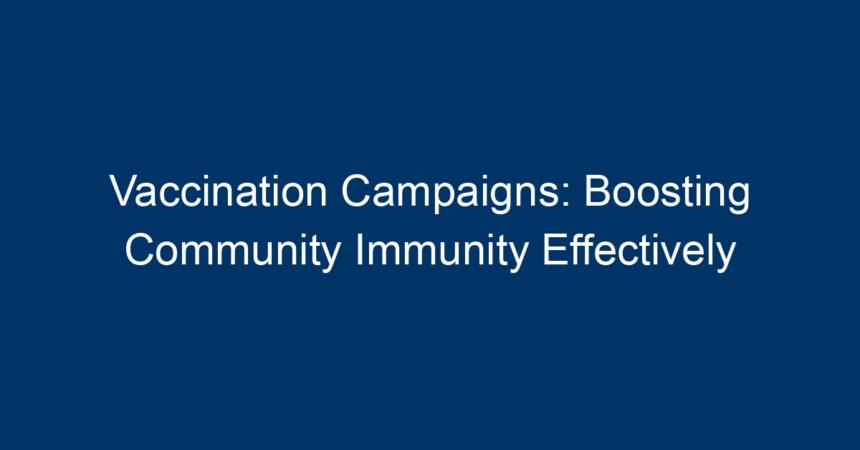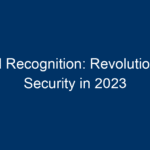In recent years, vaccination campaigns have emerged as one of the most powerful tools in public health, effectively reducing the prevalence of infectious diseases. With the COVID-19 pandemic underscoring the significance of community immunity, the need for strategic and well-organized vaccination campaigns is more critical than ever. This article explores the elements of successful vaccination campaigns, their impact on community health, and actionable strategies to enhance their effectiveness.
Understanding Vaccination Campaigns
What Are Vaccination Campaigns?
Vaccination campaigns are organized efforts designed to administer vaccines to a large number of people within a specific timeframe. They can be initiated by governments, health organizations, or non-profits and are geared towards achieving herd immunity to protect the population against contagious diseases.
The Importance of Vaccination
Vaccines are one of the most effective means to prevent disease transmission. By stimulating the immune system, vaccines help the body recognize and combat pathogens more effectively. This results in fewer hospitalizations, reduced healthcare costs, and overall enhanced public health.
Historical Context
Historically, vaccination campaigns have played an essential role in controlling outbreaks of diseases such as smallpox, polio, and measles. For instance, the smallpox vaccination campaign led to the complete eradication of the disease in 1980, showcasing the potential of organized immunization efforts.
Key Components of Effective Vaccination Campaigns
1. Target Population Identification
Establishing a clear target population is foundational to any successful vaccination campaign. Identifying groups such as children, the elderly, or high-risk individuals allows health authorities to tailor their strategies accordingly. For instance, campaigns targeting school-aged children may use schools as vaccination sites.
2. Public Awareness and Education
Increasing public awareness about the benefits and safety of vaccines is critical. Educational materials, workshops, and community meetings can help dispel myths and misconceptions. An informed community is more likely to participate in vaccination initiatives.
3. Accessibility and Convenience
For a vaccination campaign to succeed, it must be accessible. This includes providing vaccination locations in community centers, schools, and even workplaces. Additionally, offering options such as evening and weekend hours can cater to different schedules.
4. Collaboration with Local Leaders
Engaging local leaders and influencers can enhance the credibility of vaccination campaigns. These figures can champion the cause and motivate community members to participate, leveraging their established trust within the community.
5. Robust Logistics and Supply Chain Management
Logistics play a pivotal role in vaccination campaigns. Ensuring the right supply of vaccines, managing distribution networks, and maintaining cold storage requirements are essential to prevent wastage. Proper planning can help overcome these practical challenges.
Overcoming Challenges in Vaccination Campaigns
Combatting Vaccine Hesitancy
Vaccine hesitancy is one of the biggest hurdles in vaccination campaigns. Misinformation on social media, anecdotal stories, and fears about side effects can deter individuals from getting vaccinated. It’s vital to address these concerns through clear, evidence-based communication.
- Engage Healthcare Professionals: Utilize trusted healthcare providers to communicate the benefits of vaccination directly to patients.
- Social Media Campaigns: Online platforms offer an effective means to engage with the public, sharing testimonials and factual data that can counter misinformation.
Equity and Accessibility Issues
Equity in access to vaccines remains a significant challenge. Underprivileged communities often face barriers due to socioeconomic factors. It is crucial that vaccination campaigns include strategies aimed at marginalized populations, ensuring equal access to vaccines.
- Mobile Vaccination Units: Implementing mobile clinics can reach remote or underserved communities, making vaccines more accessible.
- Partner with Local Organizations: Collaborating with community organizations can facilitate trust and outreach to hard-to-reach populations.
Measuring Success of Vaccination Campaigns
Key Performance Indicators (KPIs)
To evaluate the effectiveness of vaccination campaigns, specific KPIs must be established, including:
- Vaccination Coverage Rates: The percentage of the target population that has received the vaccine.
- Public Engagement: Metrics assessing outreach efforts, such as attendance at informational sessions or social media engagement.
- Post-Campaign Surveys: Gauging community attitudes toward vaccination before and after the campaign can provide insights into its impact.
Continuous Feedback Loop
Creating a feedback mechanism allows for continuous improvement. Collecting data on challenges faced during the campaign can inform future efforts and enhance overall strategies.
Case Studies of Successful Vaccination Campaigns
The COVID-19 Vaccination Initiative
The COVID-19 pandemic catalyzed unprecedented global vaccination efforts. Governments and organizations quickly mobilized to offer vaccines, with public health messaging emphasizing safety and efficacy. This campaign demonstrated how timely action, combined with strong public engagement and collaboration, could lead to significant public health achievements.
Measles-Rubella Vaccination Campaign in India
In India, the Measles-Rubella vaccination campaign significantly reduced the incidence of these diseases. By targeting children and employing extensive public awareness campaigns, the initiative successfully increased vaccination rates and reduced mortality associated with these illnesses.
Actionable Insights for Future Vaccination Campaigns
- Tailor Strategies: Customize communication and outreach based on the demographics of the target population.
- Utilize Technology: Explore social media channels and mobile apps to provide reliable information and connect with the community.
- Engage Stakeholders: Involve local stakeholders in planning and executing campaigns to enhance credibility and reach.
- Educate and Empower: Invest in educational programs that empower community members with knowledge about vaccination.
- Monitor and Adapt: Create adaptive strategies based on ongoing feedback and data analysis to continually improve future vaccination efforts.
Conclusion
Vaccination campaigns are a cornerstone of public health, playing an essential role in safeguarding community health and preventing the spread of infectious diseases. By understanding the components of successful campaigns, overcoming challenges, and implementing best practices, communities can significantly boost immunity levels. As we move forward, the lessons learned from past campaigns will be invaluable in shaping future efforts. Emphasizing education, accessibility, and collaboration will ensure that vaccination campaigns continue to thrive and effectively protect populations worldwide.




